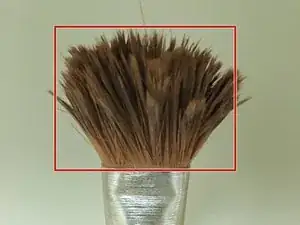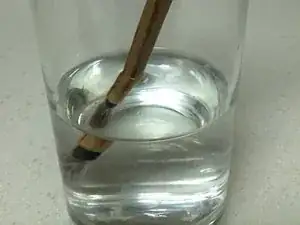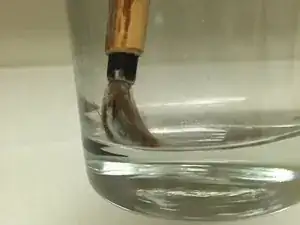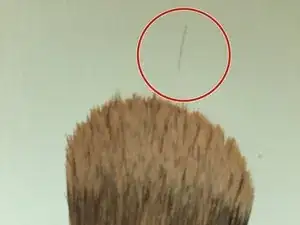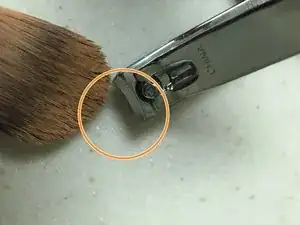Introduction
If your paint brush bristles have been rendered useless due to hard coats of paint or have lost their softness and original shape, this guide will help you repair the bristles.
Tools
-
-
Identify the brush type and the level of damage:
-
If the brush hairs are inflexible due to hardened paint coats, proceed to Step 2.
-
If the brush hairs are synthetic (fraying bristles), proceed to Step 5.
-
-
-
Remove any amount of paint that may remain on the brush by moving the brush in a circular motion.
-
-
-
To remove remnants of turpentine on the bristles, wash the brush thoroughly in water.
-
After the turpentine has been completely removed, proceed to Step 7.
-
-
-
Place the brush in the boiling water.
-
Rotate the brush in the water for approximately 5 minutes.
-
You should begin to notice that the bristles will start to come back together from the heat and water.
-
-
-
Gently dry off the brushes using a soft towel.
-
Stroke the brush in an upward motion and be careful not to dig the towel through the bristles.
-
-
-
In order to retain the brush shape, use a brush tube or wrap the bristles in aluminum foil.
-
Within approximately three hours, the brush bristles will be back to normal.
-
-
-
Cut off excess frayed bristles (optional).
-
There may be a few fraying bristles left. These are harmless and will cling to the brush shape when dipped in paint.
-
If preferred, you may use a nail clipper to cut these hairs off.
-
Your brushes should now be usable again. Unfortunately this cannot be done too many times because the turpentine will start to damage the bristles, so make sure to regularly wash your brushes.
6 comments
Is this only for synthetic brushes? What about natural hair brushes which are frayed?
Hey! Can you tell me what is the use of wrapping the bristles in aluminium foil?
The article literally says “to retain the brush shape”
I’ve seen other tutorials say to mix vinegar with the boiled water, would you recommend it?
